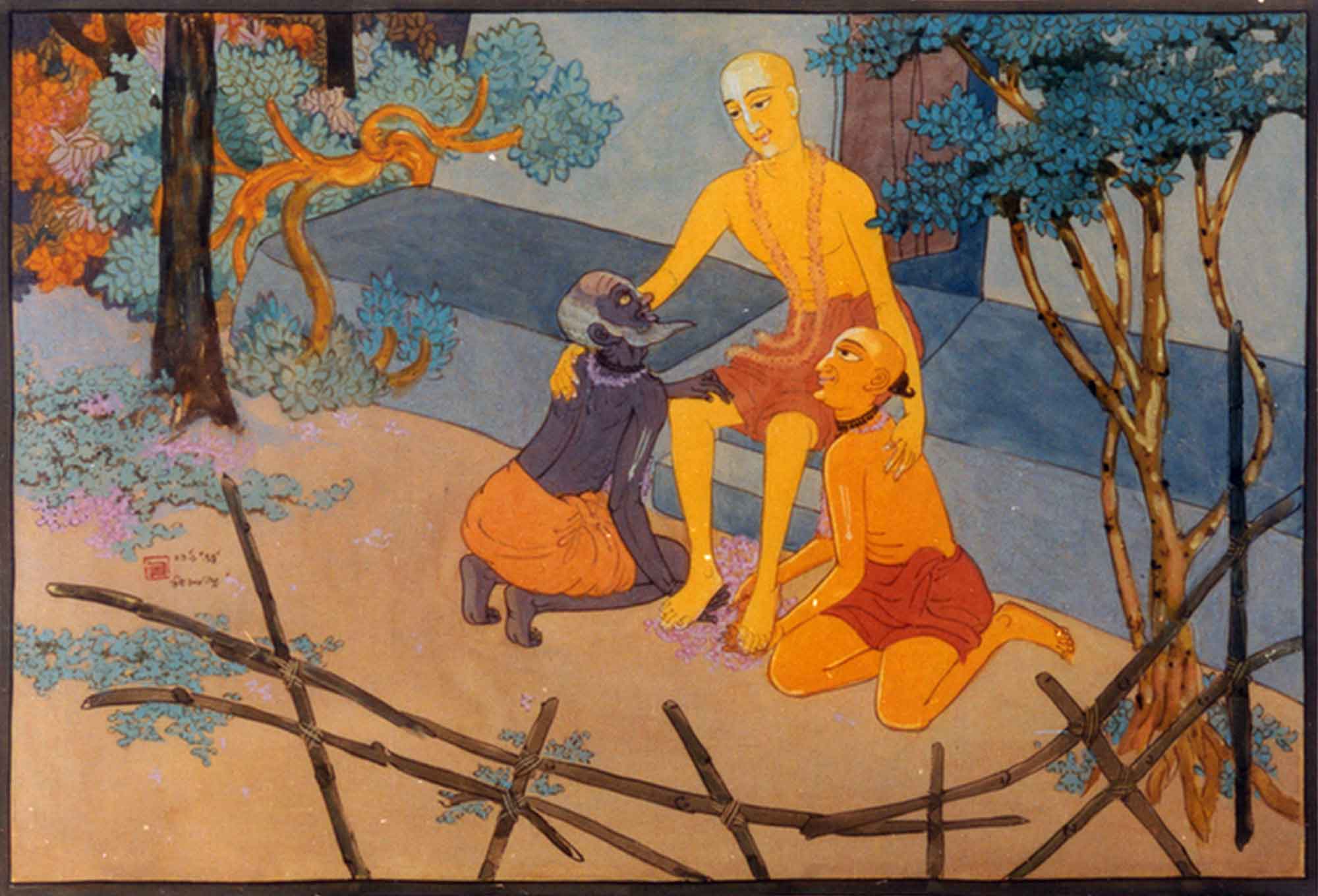Overview
Andhera Cakṣe Añjana (Salve for the Eyes of the Blind) was first published in Sajjana Toṣaṇī, Vol.8 issue 12 in 1897. In this short article, Bhaktivinoda Ṭhākura explains the historicity of the name of Māyāpura. Some scholars opine that the name only became known as Māyāpura during the time of the Sena Dynasty, whereas Bhaktivinoda claims that it was known as Māyāpura since time immemorial.
(translated by Swami B.V. Giri)
In the Bengali year 1252, that is, fifty years ago, a book called Kāyastha Kaustubha was published. Fifty mahā-mahā-paṇḍitas, such as Haldhara Tarka-cuḍāmaṇi, a resident of Bhaṭṭapalli, offered daṇḍavats to that book and confirmed the things written in there to be true. There is a chart in that book. In that it is written thus:
“The kings of the royal Sena Dynasty were mixed kāyasthas. Śrīmān Śatrughna Sena was an idolator. This king made his new capital on the island of Navadvīpa. It was surrounded by the waters of Gaṅgā Devī on all four sides. The king was a siddha (perfected being). By the potency (māyā) of Gaṅgā Devī, the city became the repository of all holy tīrthas and the place of all knowledge. It is for this reason that it is known as Māyāpura in the śāstra. Māyāpure maheśāni vāram ekaṁ śaci-sutaḥ (‘O Pārvatī, the Lord will appear in full, as the Son of Śacī in Māyāpura’ – Urddhvāmnāya Tantra).”
The information was written in Kāyastha Kaustubha from the perspective of the book, Chātraral Motākṣīn. The statement from the Urdhvāmnāya Tantra has been gathered and put together by the authors. During the reign of the Bengal Sultanate, Śrī Navadvīpa was known as Māyāpura. Māyāpura Navadvīpa is the place where the fort of the Sena kings was located. Fifty years ago, only Bengali Aryan men believed that the oldest tīrtha that appeared due to the potency of Gaṅgā Devī known as Māyāpura, had existed there since time immemorial. At this place, during the first sandhyā of the age of Kali, the Supreme Lord, Śacīnandana appeared. No one disbelieved all these words then. It seems that some professors from Pūrvasthālī signed this book and gave this information which had already been famous for a long time. The words of selfish people are one thing, and the truth is another. The reader can understand and see this.
If somebody has the book, Chātraral Motākṣīn, please look at that. That book has much information about Bakhtiyar Khalji. That Bakhtiyar Khalji approached the Hindu king, destroyed the fort at Navadvīpa Māyāpura, and defeated Lakṣmaṇa Sena. From that time onward, the prosperous sun of Gauḍa set.













